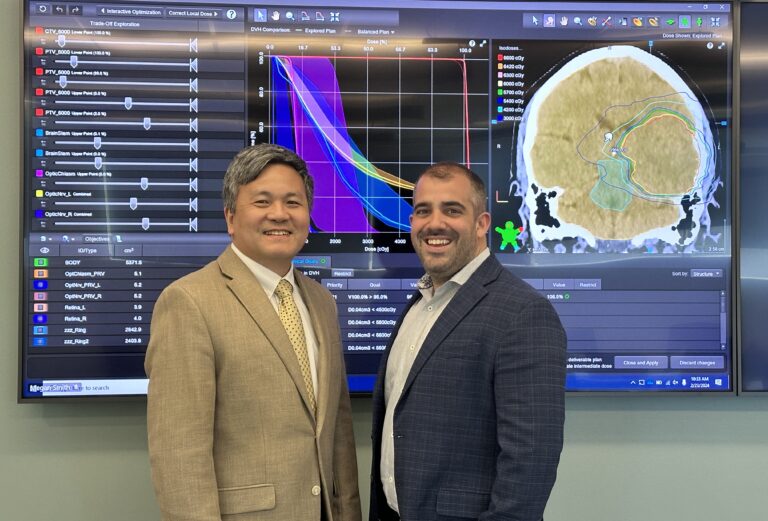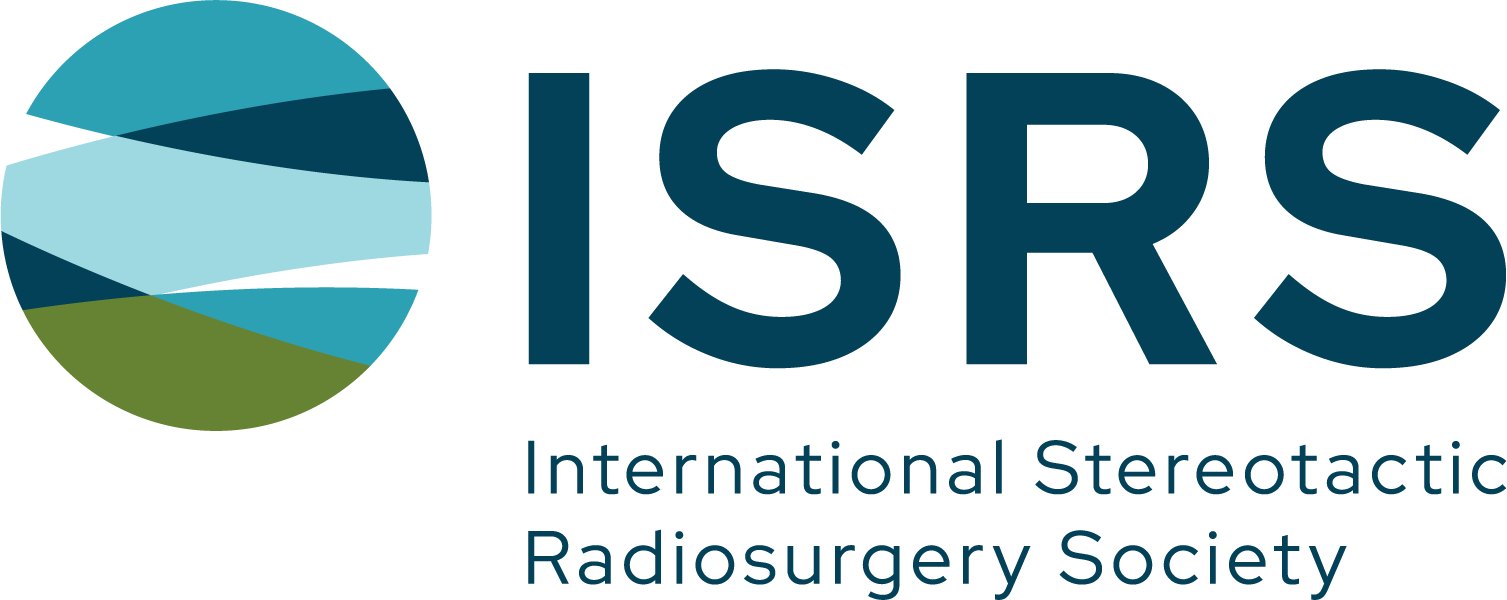The latest version of Varian’s Eclipse treatment planning system elevates and expedites linear accelerator-based stereotactic radiosurgery (SRS) treatment planning. Eclipse now incorporates powerful tools designed to improve both accuracy and clinical efficiency, including:
- Enhanced leaf modeling (ELM), which helps to ensure precision when calculating dose for even the smallest of field sizes such as those used to deliver SRS and stereotactic body radiotherapy (SBRT).
- SBRT NTO (normal tissue objective), a tool to expedite planning when creating SBRT treatment plans.
Enhanced leaf modeling
Traditional multileaf collimator (MLC) modeling can result in cumbersome beam configuration workflows and challenges for treatment plan quality assurance. ELM was introduced to overcome these challenges. It can help ensure precision for even the smallest of field sizes used when delivering SRS or SBRT. Specifically, ELM improves the modeling of the leaf tip and screw cutout of the MLC, with one dosimetric leaf gap (DLG) for all energies.
“ELM is a step forward in more accurately modeling the MLC leaf tip end and drive screw and beam divergence. We’re seeing closer agreement between predicted and measured dose distributions, presumably due to improved MLC modeling,” said Dr. Kenny Guida, DMP, DABR, Director of Treatment Planning at The University of Kansas Cancer Center—one of the first radiotherapy providers to utilize ELM clinically on its fleet of ten Varian treatment delivery systems, including the Edge radiosurgery system.
Dr. Guida and his medical physics team recreated many of the tests reported in a 2022 paper by Ann Van Esch et al, to verify that the ELM feature could enhance the accuracy of SBRT treatments(1).
“Our testing showcased, among other positive observations, how much better ELM was in modeling the leaf tip and off-axis dose distributions, which are both critical in radiation therapy today with the increased use of small fields in SRS and SBRT.”
Dr. Guida’s team recently commissioned their Edge radiosurgery system, equipped with Varian’s HyperArc solution for SRS. Consequently, the team set out to fully understand the impact that ELM would have on the planning of single-isocenter, multi-target treatments with HyperArc. They found that, when ELM is used to create HyperArc plans, actual dose measurements “align much more closely with the predictions in Eclipse, which should make a big impact on the accuracy of SRS treatments,” he said.
SBRT NTO
Clinics seeking to apply stereotactic accuracy to extracranial disease sites can create complex plans more quickly and easily with the automated SBRT NTO algorithms now provided in Eclipse. SBRT NTO automates the process, eliminates time-consuming optimization steps, reduces error-prone manual contouring of optimization shells, and enforces sharp dose fall-off around target volumes to safeguard healthy tissues. Clinicians can leverage their choice of the most optimal field arrangement for each patient, with SBRT NTO supporting both coplanar and noncoplanar field set-ups.
According to Dr. Guida, SBRT NTO can be a very useful treatment planning tool, especially as clinics are treating more oligometastatic disease. “For cases where a planner is treating multiple targets in the lungs or liver, SBRT NTO aims to drive conformity and reduce dose bridging without having to add additional avoidance structures,” he said.
Eclipse was designed to meet the challenges of patient care today: to improve outcomes with more accurate techniques while relieving the strain on clinical resources. It includes many other features aiming to enhance accuracy and clinical efficiency today and set course for the future. To learn more, view a demo video, or download a feature sheet, visit Varian’s Eclipse webpage.

Please note: the statements by Varian’s customers described here are based on results achieved in the customer’s unique clinical setting. Because there is no “typical” clinical setting and many variables exist, there is no guarantee that other customers will achieve the same results.
This article was excerpted from more detailed articles that appeared in “Centerline,” Varian’s online magazine for the clinical oncology community:
Eclipse v18.0: Meeting the Challenges of Patient Care Today
The University of Kansas Cancer Center Enthusiastically Embraces Eclipse v18.0. Here’s Why.
(1) Van Esch, Ann, et al. “Testing of an enhanced leaf model for improved dose calculation in a commercial treatment planning system.” Med Phys, 2022, 1-12. DOI:10.1002/mp.16019
